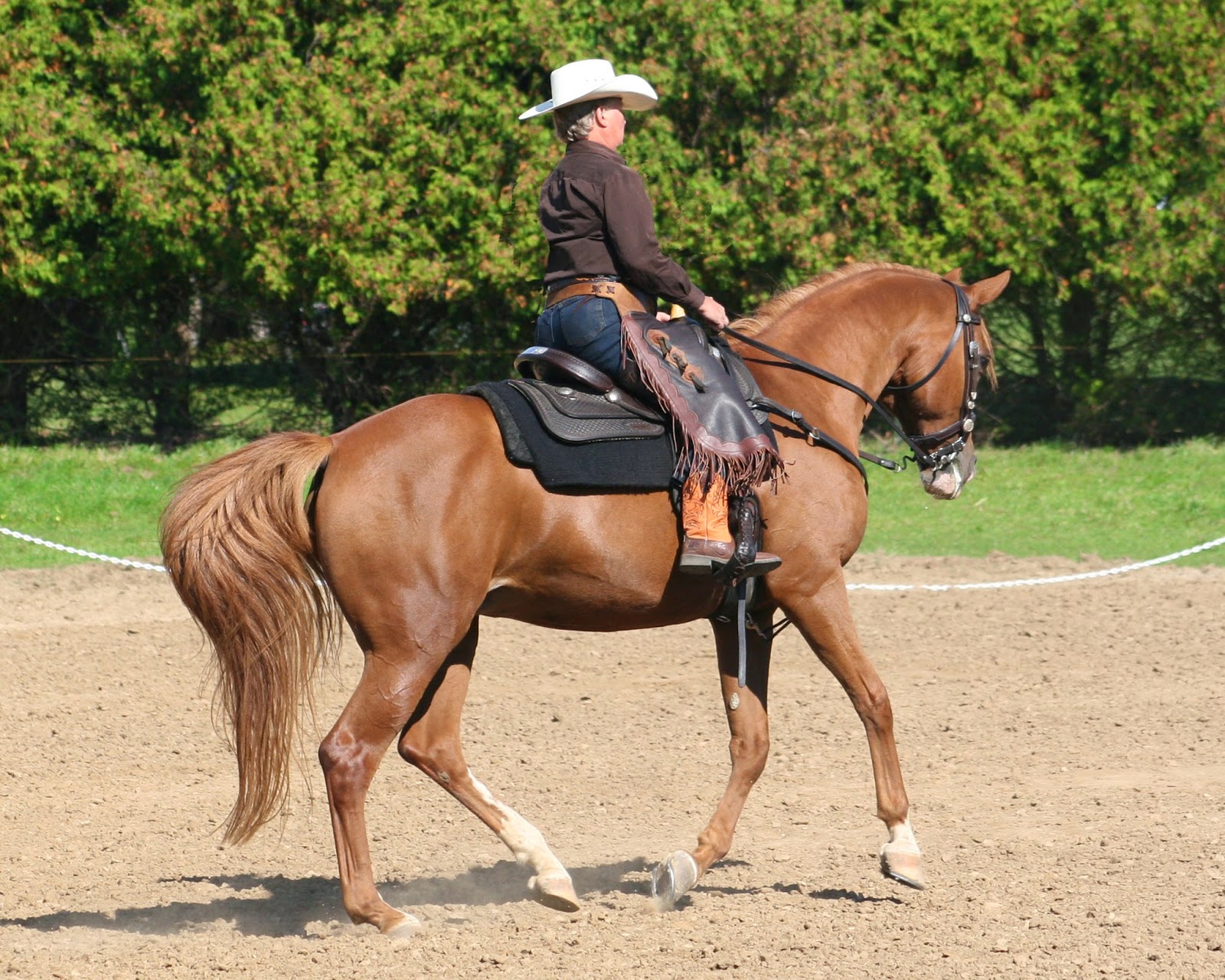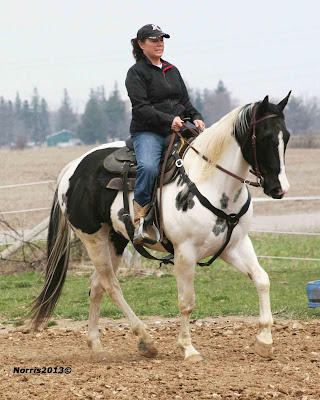Correct Hand Position Leads to a Correct Riding Position for Both Horse and Rider
A great example of the correct position in the saddle. Even line from the rider's shoulder, through the elbow, hip and heel. The rider is sitting on the center of gravity of the horse. The elbow-wrist-rein line is a perfect line to the contact which is soft but connected. The horse is standing square and attentive waiting for the next command.
A close up view of the contact reveals a soft connection to the lips of the horse. The top line of the horse is soft, and the nose is slightly in front of the vertical. You can see a softness of the horse's bottom neck muscles.
Definitely a bad connection and position. The riders' hands are too low, creating pressure on the bars of the horse's mouth. The rider is out of line, leaning forward, therefore putting too much weight into the horse's front end. The horse is badly behind the vertical and is stressed with the mouth open attempting to avoid the rider's hands.
The horse's mouth is gaping open in avoidance to the rider's hands. You can see the pressure behind exerted to the bars of the horses' mouth. The fingers of the rider are open. The open fingers do not illustrate "soft feel" but at times the total opposite. The hooked finger is stronger than the whole hand, and as far as a safety element, if the horse trips, the rider may easily lose the reins. The open fingers also create an inability to keep a consistent rein length.
Below Photo: I often call this the "Band Conductor" position. The hands of the rider are extremely high breaking the elbow wrist rein line. The rider's back is hollow, and the horse reflects it. The bit is pulled upward in the horses' mouth causing the horse to lift and arch his back. Note the bulge on the bottom side of the horses' neck. Definitely painful and detrimental to the horses' way of going. It also creates the rider who is always changing their position in the saddle. The reins to the horses' mouth should be like silk threads. Even a rein that appears to be "tight" can actually be quite the opposite. I like my reins to be in contact so that if I have to make a correction, I do it by bending my knuckles only. Minimize to maximize!
The horse is very uncomfortable with a tightened and crossed jaw and opened mouth.
If the hand is correctly carried, the whip is carried across the rider's thigh. There is a clear line from elbow to wrist then rein to the horse's mouth.
No matter what your goals are, correct position is very imperative to learning and advancing through the levels with your horse.

















